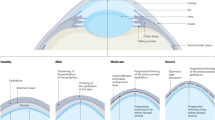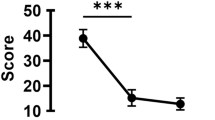Abstract
The purpose of this study was to examine normal vision and eye disease in relation to art. Ophthalmology cannot explain art, but vision is a tool for artists and its normal and abnormal characteristics may influence what an artist can do. The retina codes for contrast, and the impact of this is evident throughout art history from Asian brush painting, to Renaissance chiaroscuro, to Op Art. Art exists, and can portray day or night, only because of the way retina adjusts to light. Color processing is complex, but artists have exploited it to create shimmer (Seurat, Op Art), or to disconnect color from form (fauvists, expressionists, Andy Warhol). It is hazardous to diagnose eye disease from an artist’s work, because artists have license to create as they wish. El Greco was not astigmatic; Monet was not myopic; Turner did not have cataracts. But when eye disease is documented, the effects can be analyzed. Color-blind artists limit their palette to ambers and blues, and avoid greens. Dense brown cataracts destroy color distinctions, and Monet’s late canvases (before surgery) showed strange and intense uses of color. Degas had failing vision for 40 years, and his pastels grew coarser and coarser. He may have continued working because his blurred vision smoothed over the rough work. This paper can barely touch upon the complexity of either vision or art. However, it demonstrates some ways in which understanding vision and eye disease give insight into art, and thereby an appreciation of both art and ophthalmology.
Similar content being viewed by others
Log in or create a free account to read this content
Gain free access to this article, as well as selected content from this journal and more on nature.com
or
References
Trevor-Roper P . The World Through Blunted Sight. Allen Lane, The Penguin Press: London, UK, 1988.
Marmor MF, Ravin JG . The Artist’s Eyes. Abrams: New York, NY, USA, 2009.
Normann RA, Perlman I . The effects of background illumination on the photoresponses of red and green cones. J Physiol 1979; 286: 491–507.
Purves D, Lotto RB . Why We See What We Do Redux. Sinauer Associates: Sunderland, Massachusetts, 2011.
Livingstone M . Vision and Art: the Biology of Seeing. Abrams: New York, NY, USA,, 2002.
Lanthony P . Les Yeux des Peintres. L’Age d’Homme: Lausanne, Switzerland, 1999.
Simunovic MP . “The El Greco fallacy” fallacy. JAMA Ophthalmol 2014; 132: 491–494.
Maxmin J . Euphronios epoiesen: portrait of the artist as a presbyopic potter. Greece & Rome 1974; 21: 178–180.
Marmor MF, Lanthony P . The dilemma of color deficiency and art. Surv Ophthalmol 2001; 45: 407–415.
Law BM . Constable and Color. Paper read at Canadian Ophthalmol Congress: Banff, Alberta, 1957.
Cole BL, Harris RW . Colour blindness does not preclude fame as an artist: celebrated Australian artist Clifton Pugh was a protanope. Clin Exp Optom 2009; 92: 421–428.
Vasari . Lives of the Painters, Sculptors and Architects, 1568 Transl: G de Vere, 1912. Everyman’s Library, Alfred A, Vol 2. Knopf: New York, NY, USA, 1996, pp 277–278.
Marmor MF . Bandinelli era daltonico?. In: Heikamp D, Strozzi BP (eds) Baccio Bandinelli: Scultore e Maestro (1493-1560). Giunti Editore: Florence, Italy, 2014.
Marmor MF . Ophthalmology and art: simulation of Monet’s cataracts and Degas’ retinal disease. Arch Ophthalmol 2006; 124: 1764–1769.
Liebreich R . Turner and Mulready. On the effect of certain faults of vision on painting, with especial reference to their works. Proc Royal Inst Great Britain 1872; 6: 450–463.
Marmor MF . Degas Through His Own Eyes: Visual Disability and the Late Style of Degas. Somogy Editions d’Art: Paris, France, 2002.
Marmor MF . Simulating Degas’ vision: implications for dating his sculpture. Sculpture Journal 2013; 22: 96–108.
Lanthony P . Art and Ophthalmology. Wayenborgh Publications: Paraguay, 2009.
Acknowledgements
All modern consideration of ophthalmology and art owes a debt to British ophthalmologist Patrick Trevor-Roper whose seminal book1 was originally published in 1970. I am grateful to Richard Keeler for proposing this topic for the Keeler Lecture, and to my colleague and co-author2 James G Ravin who has expanded my knowledge about eye disease in artists. Finally, as an academician writing about art, I am grateful to museums and organizations that are now making images of great art available as free access for scholarly publication: Google Art Project (and contributing museums), Metropolitan Museum of Art (New York), National Gallery of Art (Washington, DC), and Wikimedia Commons and Foundation (and contributing museums).
Author information
Authors and Affiliations
Corresponding author
Ethics declarations
Competing interests
The author declares no conflict of interest.
Rights and permissions
About this article
Cite this article
Marmor, M. Vision, eye disease, and art: 2015 Keeler Lecture. Eye 30, 287–303 (2016). https://doi.org/10.1038/eye.2015.197
Received:
Accepted:
Published:
Issue date:
DOI: https://doi.org/10.1038/eye.2015.197
This article is cited by
-
Photochemistry of the retinal chromophore in the process of seeing (vision)
ChemTexts (2024)
-
Vision, eye disease, and art
Eye (2016)



